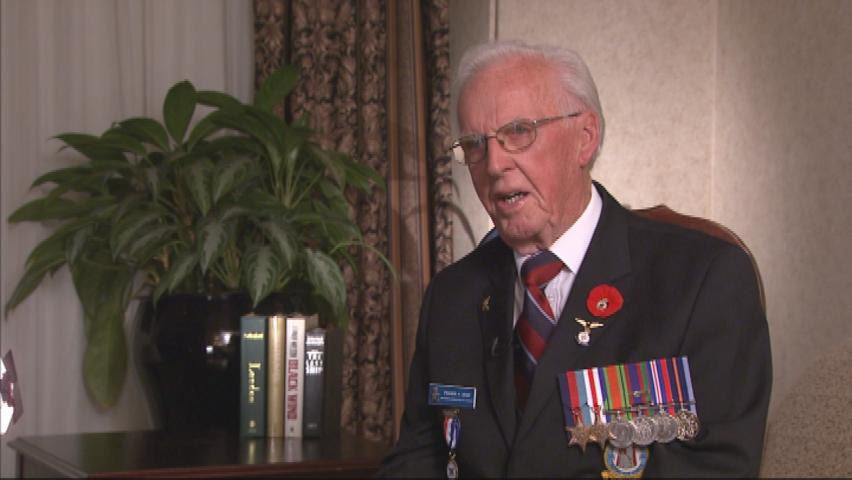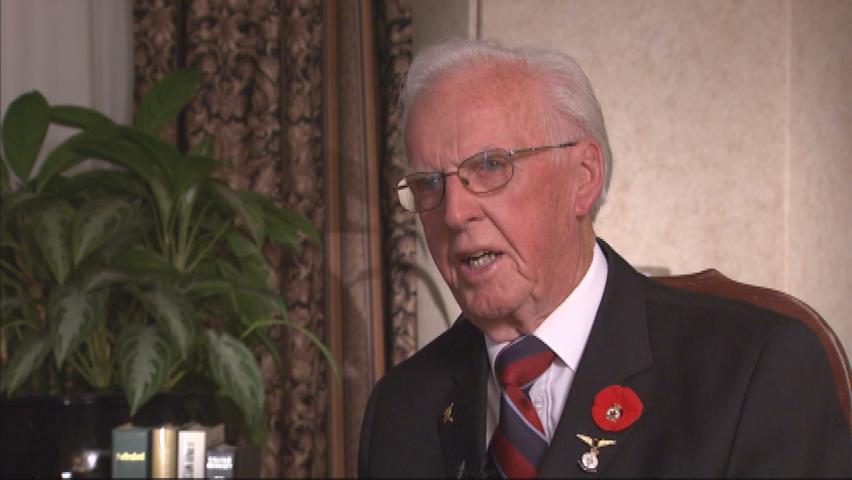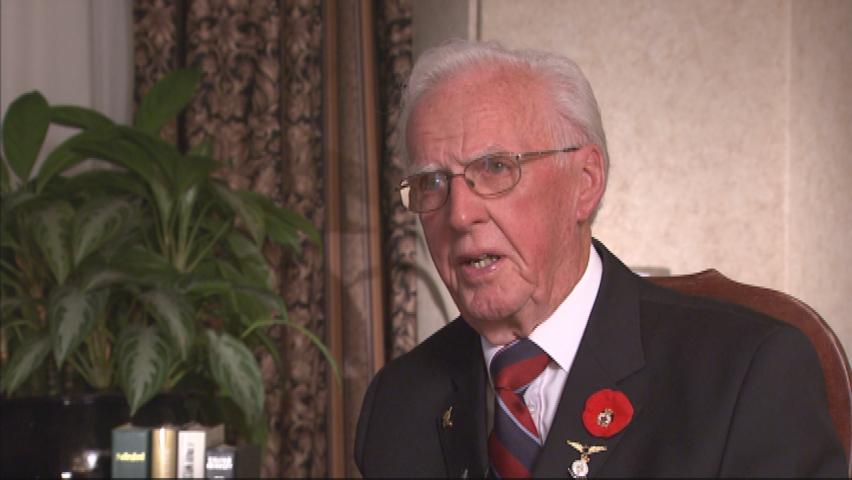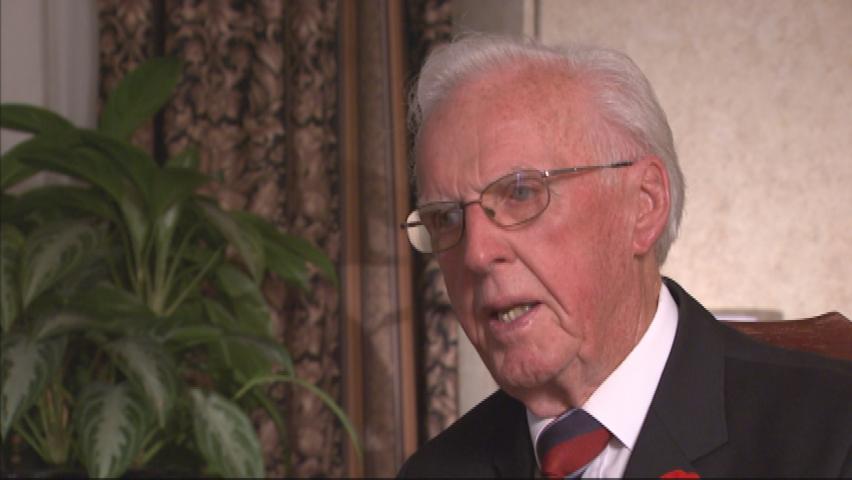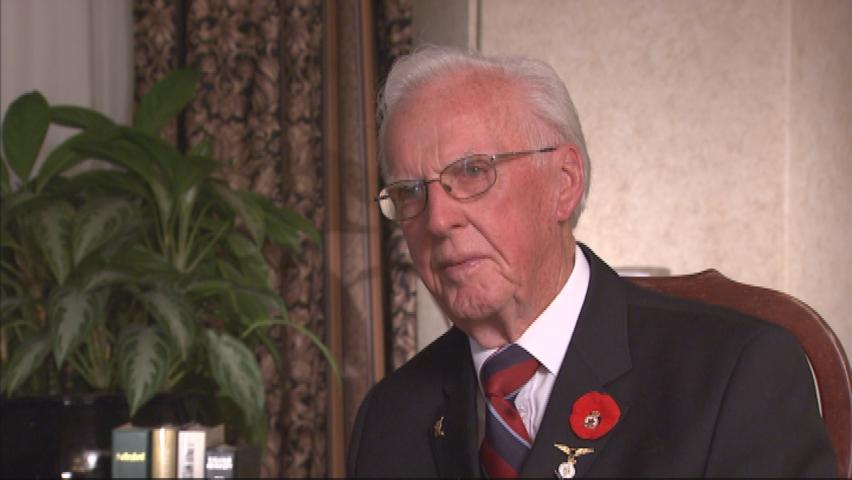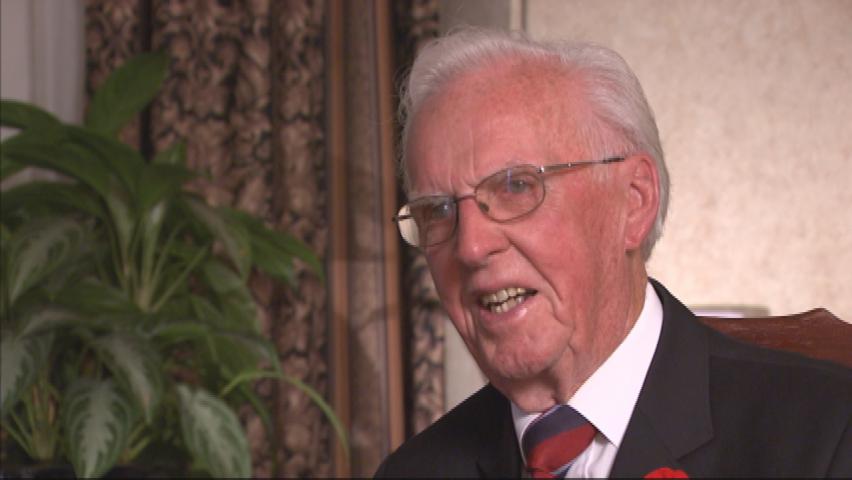Scary Moments in Flight
Heroes Remember - The Second World War
Scary Moments in Flight
Transcript
Description
Mr. Muir describes the dangers and emotions involved with bombing runs.
Fraser Muir
Fraser Alexander (Red) Muir was born on June 27, 1924, in Westville, Nova Scotia. Mr. Muir trained as an air gunner and received his wings at Mount Stewart, Prince Edward Island, in January 1943. He was seconded to the Royal Air Force (RAF) after arriving overseas in April, 1943, and was eventually posted to 50 Squadron, 5 Group, RAF Bomber Command based in England. Mr. Muir served as a mid upper gunner, and completed 35 operations over enemy territory, and had achieved the rank of warrant officer 2 at the end of the war. On returning to Canada, he returned to high school, and went on to complete a Bachelor of Commerce at St. Francis Xavier University in Antigonish, Nova Scotia. He was employed at Air Canada, retiring in 1983 after 30 years of service.
Meta Data
- Medium:
- Video
- Owner:
- Veterans Affairs Canada
- Recorded:
- June 3, 2012
- Duration:
- 3:43
- Person Interviewed:
- Fraser Muir
- War, Conflict or Mission:
- Second World War
- Location/Theatre:
- England
- Branch:
- Air Force
- Units/Ship:
- RAF 50 Squadron
- Occupation:
- Mid Upper / Tail Gunner
Related Videos
- Date modified:



